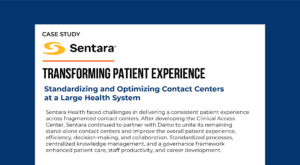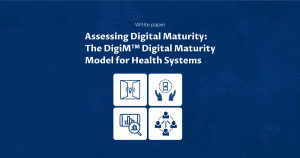Patient Journey Mapping Must Be Fundamental to Your CRM Strategy
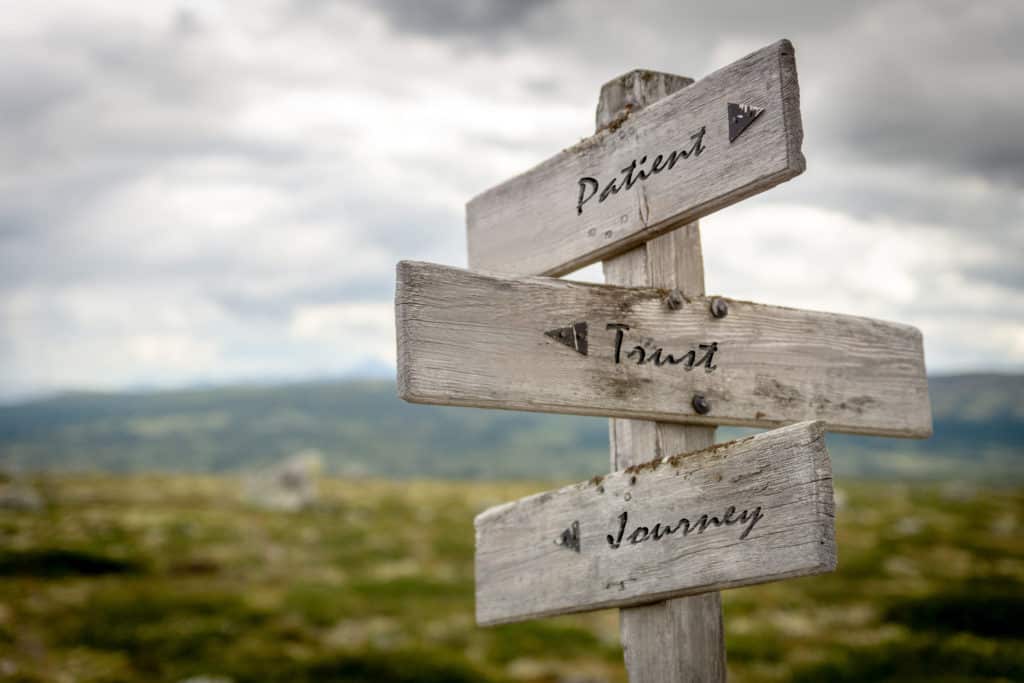
A patient journey map is a series of touchpoints along a patient’s care continuum with a health system, payer, or provider organization. The journey begins when a consumer queries about a symptom or ailment and continues with diagnosis, consultations, investigations, remediation or outcomes of the illness, follow-ups, and referrals. At any given time on this journey, a patient moves along the path expecting to receive help or be guided into finding answers. What patients experience during their journey is captured as patient experience.
According to the AHRQ, patient experience includes the range of interactions that patients have with their provider organization, including the interactions with health plans, doctors, nurses, and staff in hospitals, and other healthcare facilities, scheduling timely appointments, easy access to information, and good communication with health care providers.
Each touchpoint requires dedicated relationship management or a care manager to ensure an optimal patient experience and interaction with the organization. These touchpoints, when digitalized, are good sources of patient behavioral data – search trends, physician popularity, peak appointment time, and more. Therefore, tapping into these touchpoints is crucial to a healthcare organization’s overall digital transformation and CRM strategies.
Patient Journey Hotspots
While there can be many touchpoints in a patient’s journey depending on the patient and the healthcare organization in question, there are certain hotspots we can tap into, to begin with mapping their journey:
- Seeking health information online
- Choosing a physician or healthcare organization for treatment
- Appointment scheduling
- Remote interactions with physicians and clinicians
- Digitally receiving prescriptions
- Interaction with other care team members
- Filling, refilling, and approving refills for prescriptions
- Reporting satisfaction
- Receiving ongoing care and reminders
The above patient journey hotspots can be leveraged to identify and create detailed journey maps. By focusing on these hotspots, organizations can easily focus on their consumers and patients and address pain points.
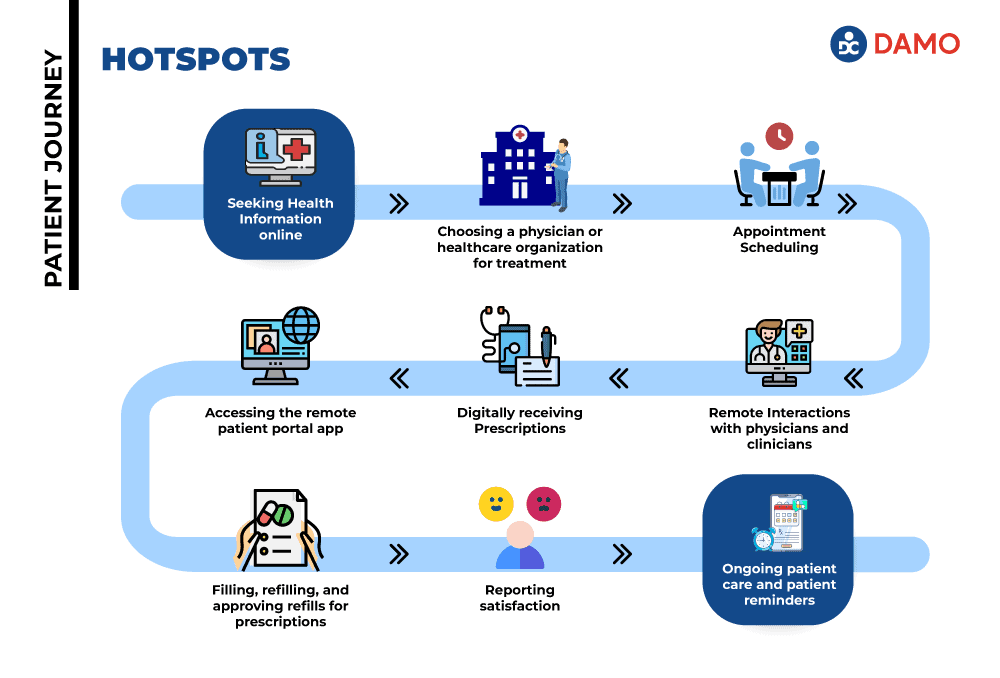
Identifying and creating the right patient cohorts for your campaigns
Selecting appropriate patient cohorts is extremely important for running effective patient campaigns. Consumers belonging to a cohort share the same demography, query type, disease type, geography, social background, or financial background. Running a successful patient campaign requires approaching a cohort with a shared purpose that drives the needs of everyone inside the cohort for the best possible outcomes.
A wrong cohort selection can affect the effectiveness of the campaign and may also render it useless. Suppose we target regular diabetic and gestational diabetic patients under the cohort and send a campaign. In that case, it will be incorrect targeting as the needs of the two categories are different. Messages, communication, and offers sent will not resonate with one or either of the groups under diabetes.
Appropriate selection of cohorts helps collect important data about consumers and patients, enabling organizations to run meaningful studies and derive actionable insights. These insights can help with decision-making, designing new healthcare services, improving existing ones, identifying care gaps, changing communication, sharing educational content, and more. It is always wise to include a clinician in the cohort selection group to help with these traits.
Digitalizing the patient journey map with CRM
By digitalizing and automating parts of the patient journey and integrating with CRM, organizations can personalize patient journeys and experiences. They can gather and study data to understand and recognize their expectations and respond appropriately. Integrating CRM with the EHR helps create a 360* view of the consumer and the patient, thus helping design better-targeted campaigns and improved communication.
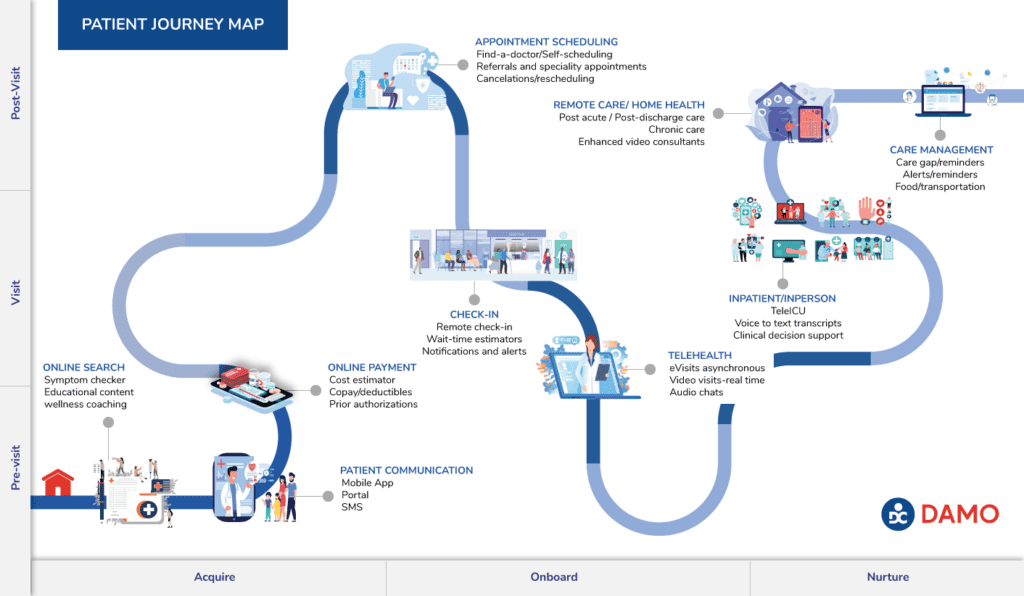
Appointment scheduling: Self-scheduling recommendations by CRM based on previous appointment(s) booked, and physicians preferred or consulted with. Displaying wait times or rush hours are a few other features that can be leveraged for appointment scheduling.
Self-service portal: Self-service portals are a great way of empowering consumers and patients to find answers on their terms. When integrated with the CRM, a well-designed self-service portal helps gather data about what consumers are browsing, identify missing content, gaps in touch points, opportunities to woo consumers and retain patients, and improve the quality of content on the portal. A self-service portal can also be a significant part of ongoing campaigns for patients and consumers.
Medication adherence: According to the American Medical Association (AMA), the top eight reasons why patients do not adhere to their medication routine are:
- Fear of becoming dependent on medicines.
- Scared of potential side effects.
- Cost of medicine.
- Failing to understand the need to stick to the medication schedule.
- Unable to keep up with too many medications.
- Lack of symptoms
- Mistrust in physician’s motives
- Depression
Healthcare organizations can alleviate all or most of the above worries for patients through:
- Timely reminders
- Sending educational materials regarding the need to take medicines, avoid discontinuation without physician consultation, offer financial aid, and provide clarity around symptoms, medications, and the need to complete their full course.
- Scheduling regular checkups and follow-ups
Patient campaigns: It is easier to run effective campaigns if data related to a consumer or a patient’s requirement is available in some form. In this case, organizations can use a CRM to capture consumer and patient-related behavior, ailment, and symptom data Organizations can use a CRM to capture consumer and patient-related behavior, ailment, and symptom data in this case. Using these data, organizations can design targeted campaigns to reach out or inform patients about ongoing offers, annual visits, ongoing vaccination drives, clinical trials, research studies, and more.
By making patient journey mapping a crucial part of any CRM strategy in healthcare, healthcare leaders can optimize their patient experience and patient care and improve their bottom lines.
How are you integrating CRM with your EHR and patient journey?

